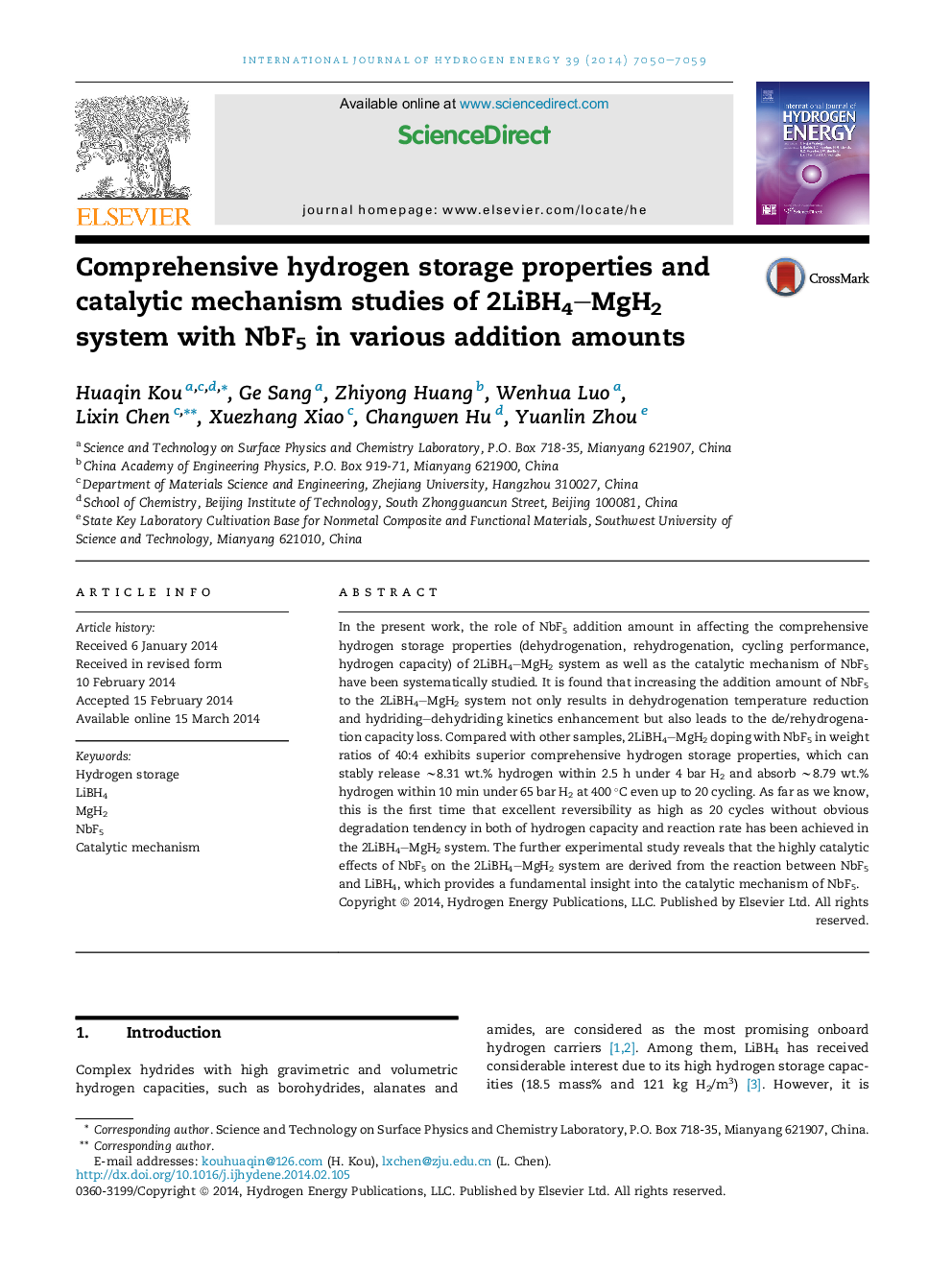| Article ID | Journal | Published Year | Pages | File Type |
|---|---|---|---|---|
| 1273459 | International Journal of Hydrogen Energy | 2014 | 10 Pages |
•We study the critical addition amount of NbF5 to emit catalytic characteristic.•We reveal a possible catalytic mechanism of NbF5 in 2LiBH4–MgH2 system.•2LiBH4–MgH2 doped with NbF5 in weight ratios of 40:4 exhibit superior properties.•Excellent reversibility as high as 20 cycles without capacity loss is achieved.•The remarkable catalytic effects of NbF5 are derived from the reaction with LiBH4.
In the present work, the role of NbF5 addition amount in affecting the comprehensive hydrogen storage properties (dehydrogenation, rehydrogenation, cycling performance, hydrogen capacity) of 2LiBH4–MgH2 system as well as the catalytic mechanism of NbF5 have been systematically studied. It is found that increasing the addition amount of NbF5 to the 2LiBH4–MgH2 system not only results in dehydrogenation temperature reduction and hydriding–dehydriding kinetics enhancement but also leads to the de/rehydrogenation capacity loss. Compared with other samples, 2LiBH4–MgH2 doping with NbF5 in weight ratios of 40:4 exhibits superior comprehensive hydrogen storage properties, which can stably release ∼8.31 wt.% hydrogen within 2.5 h under 4 bar H2 and absorb ∼8.79 wt.% hydrogen within 10 min under 65 bar H2 at 400 °C even up to 20 cycling. As far as we know, this is the first time that excellent reversibility as high as 20 cycles without obvious degradation tendency in both of hydrogen capacity and reaction rate has been achieved in the 2LiBH4–MgH2 system. The further experimental study reveals that the highly catalytic effects of NbF5 on the 2LiBH4–MgH2 system are derived from the reaction between NbF5 and LiBH4, which provides a fundamental insight into the catalytic mechanism of NbF5.
